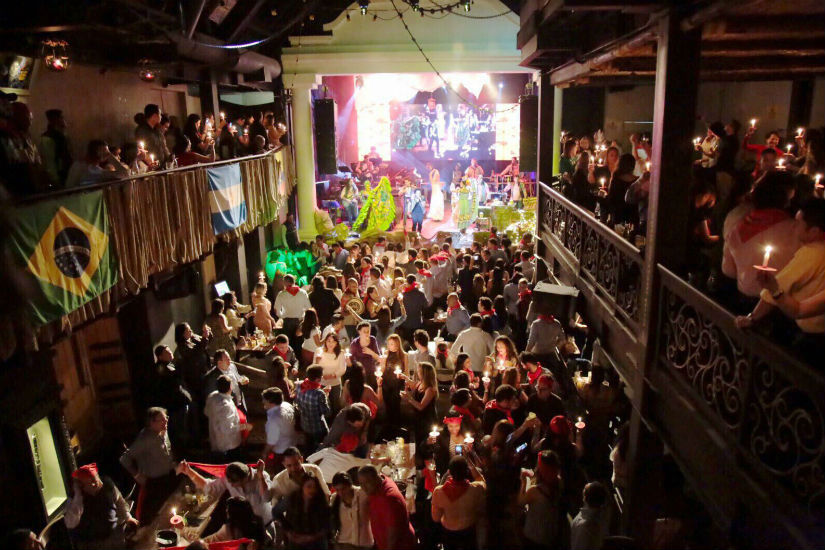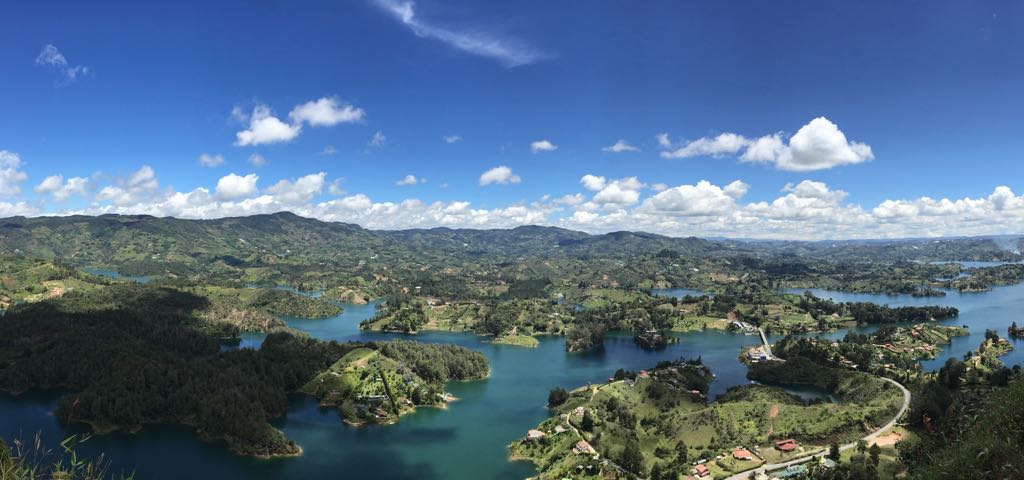
The Colombian capital is a vast, noisy, and intense city, but Bogota has a lot more to offer than initially meets the eye, and not just for solo travellers. It caters to all groups of visitors, be it the business tourist there for a business meeting, a backpacker touring his/her way down the length of South America, parents with kids in tow or couples checking out the cosmopolitan city. Going around the city is also convenient using the Transmilenio, which is a special bus lane and high platforms like the train, so people tap in and tap out of gantries at each bus stop.

Bogotá is Colombia’s beating heart, an engaging and vibrant capital cradled by chilly Andean peaks and steeped in sophisticated urban cool. The city’s cultural epicenter is La Candelaria, the cobbled historic downtown to which most travelers gravitate. Here, a potpourri of carefully preserved colonial buildings is home to museums, restaurants, hotels and bars, peppered amid 300-year-old houses, churches and convents. Nearly all of Bogotá’s traditional attractions are here, radiating from Plaza de Bolívar, and gorgeous Cerro de Monserrate is just east.
Monserrate
No trip to Bogotá is complete without a trip 3,152 meters (10,341 feet) up into the mountains to the Monserrate cathedral and its spectacular viewing point. The view from the top of the mountain gives you a real sense of the size and seemingly endless boundaries of the city. To reach the top of the mountain and the cathedral you can take a cable car, train, or alternatively trek up to the top. For our group of friends, we reached the base of the hill too late so the footpath was already closed, so we had no choice but to take the cable car. It is priced at COP$10000 for a one-way ticket. Most people buy the return ticket at the bottom ticketing counter and make their way up. Along the way, admire the panoramic view as the towering skyscrapers over Bogota start to become miniscule. There is a church and a local market at Monserrate to explore when you reach the top.

La Candelaria
Going back to the city centre, La Candelaria is the historic center of Bogotá, where the city was first founded over 300 years ago. Much of the neighborhood is made up of colorful colonial buildings, with much of the period architecture being preserved alongside the modern office buildings occupying the area. Plaza Bolivar is a huge square plaza in the middle of the city surrounded by a cathedral and ministry buildings. It is a relaxing place to people watch and you can see some infants chasing away the crows excitedly. On the other hand, there are also some local touts who would approach you to take photos or to sell you to join one of the city tours. Just decline them politely.

Botero Museum
Address: Cl. 11 #4-41, Bogotá, Colombia
The Botero museum is a must-visit when in Colombia and the best of all is that entrance is free! What are all these ‘fat’ people and sculptures doing inside the museum? It must have been an eye-opener to those who are used to seeing the slim or fit bodies of people portrayed by the general media.


Fernando Botero is the Colombian artist that has enchanted the world with his famous chubby characters and elements of political criticism and a refined sense of humor. Botero is a figurative artist and sculptor from Medellín, Colombia. He is known for his unique style, also known as Boterismo. He’s considered as one of the most recognized living artists in Latin America as well as in Colombia.

Variety of nightlife
Being the capital city, Bogotá is a city of variety, with many Colombians moving to the city from different areas of the country, bringing with them their traditions and cultural influences, which is especially noticeable in the city’s nightlife scene. With music arriving in the city from the Caribbean coast, Pacific coast and everywhere in between, providing a range of nightlife venues from basement bars to huge, three-story clubs, Bogotá has it all.

Graffiti tour
The Colombian capital has been a mecca for street artists since graffiti was decriminalised in 2011. Businesses commission artists, celebrities leave their tag, and you can even join a tour of iconic works. Buildings have been splashed with colours to give life and vibrancy to old neighbourhoods and also to instil a sense of belonging in the community. Bogotá’s downtown area, including Avenida Caracas and Carrera 10, is the best spot to see big-format walls. In the last few years, the city has commissioned some of Bogotá’s tallest walls with many reaching eight floors and up. However, graffiti art did not flourish in the city all along as the police cracked down hard on graffiti artists like drug dealers. It was in 2011 that a boy was killed by the police while doing some graffiti art. In these recent years, graffiti has made a comeback in the city and it is always nice to walk through side alleys and streets while admiring the artwork made by these talented graffiti artists.


Street food
Last but not least, Colombian street food is delicious, with everything from fruit, to dessert to breakfast served by street vendors. The vast majority of street food is prepared or cooked in front of customers, on grills, chopping boards, or blended in juicers. Street food is cheap, and can be found on many street corners. There are vendors selling all sorts of delicious local food from steamed corn to fresh fruit juices. Traditional Colombian arepa (ground maize flatbread) can be readily found and it forms a staple of the Colombian diet as it can be paired with all kinds of food.



